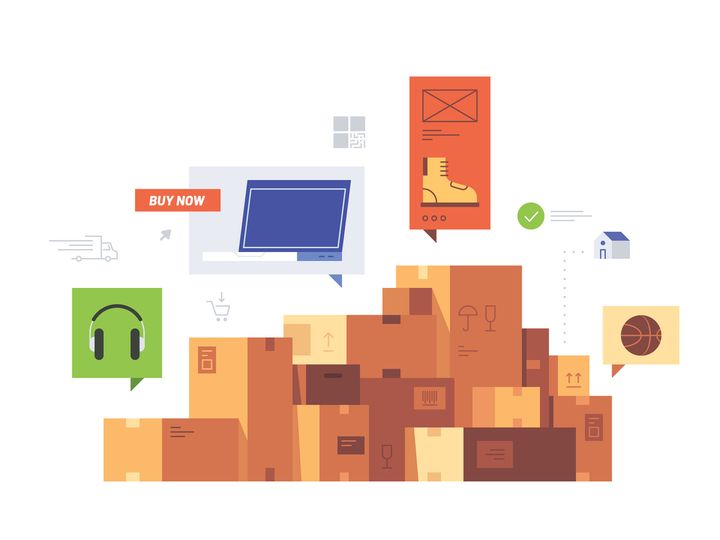How to Improve Customer Service in Logistics
We’ll explore actionable strategies to enhance logistics customer service, ensuring that your business runs smoothly and your clients remain satisfied.

Customer service is a critical component of logistics, especially in the B2B landscape. Businesses rely on efficient, transparent, and timely delivery of goods to maintain their operations and satisfy their customers. Poor logistics services can disrupt supply chains, delay production, and lead to customer dissatisfaction. As companies scale, managing complex logistics becomes even more challenging. To remain competitive, businesses must find ways to improve customer service in their logistics operations. In this article, we’ll explore actionable strategies to enhance logistics customer service, ensuring that your business runs smoothly and your clients remain satisfied.
1. Enhance Communication Channels
Effective communication is the backbone of successful logistics operations. Keeping customers informed about their shipments in real time helps build trust and prevent misunderstandings. Businesses should leverage multiple communication channels such as email, SMS, or live chat to provide customers with shipment updates.
Providing proactive notifications for delays or unexpected changes can prevent customer frustration. Furthermore, integrating global logistics tracking systems can ensure transparency throughout the entire shipping process. For instance, companies using platforms like Taobao dropshipping or Shop 1688 can benefit from real-time order updates, helping customers stay informed about their orders.
2. Optimize Delivery and Transit Times

In logistics, time is money. Customers expect faster delivery times, and optimizing routes can significantly reduce transit delays. Advanced route optimization tools can help logistics companies minimize delivery times and improve efficiency.
In addition to faster shipping, providing flexible delivery options, such as same-day delivery or scheduled deliveries, allows businesses to better serve their customers. Offering automated order processing systems, especially for WooCommerce dropshipping or Taobao Shopify models, can streamline the supply chain, making it easier to fulfill orders quickly.
3. Transparency and Tracking
One of the most effective ways to improve customer service in logistics is by providing full transparency. Real-time tracking systems allow customers to monitor their orders from the point of dispatch to delivery. This not only provides peace of mind but also reduces the need for customers to reach out for updates.
For businesses engaged in global logistics and supply chain management, implementing online portals where customers can track their orders, review order history, and even initiate returns is essential. Platforms like 1688 dropshipping also offer integrated tracking systems, ensuring that customers can monitor the status of their orders with ease.
4. Personalization and Customization

Every business has unique logistics requirements, especially in B2B sectors where bulk orders, international shipments, and tight deadlines are common. Offering personalized shipping solutions tailored to a company’s specific needs can improve customer satisfaction. For instance, ecommerce platforms working with sourcing specialists may require customized shipping plans depending on their product type, volume, or geographic location.
Collecting customer feedback and using it to refine logistics operations is also crucial. Businesses should regularly survey their clients to identify pain points in their logistics service and make the necessary adjustments to enhance performance.
5. Partner with Reliable Carriers

The quality of customer service in logistics is only as good as the carriers involved in the supply chain. Partnering with reliable shipping carriers ensures that orders arrive on time and in good condition. Regularly assessing carrier performance can help identify gaps in service and areas for improvement.
Businesses that use supply chain sourcing platforms, such as 1688 shopping, should maintain a roster of reliable shipping partners. For instance, having a dedicated supplier agent can ensure better communication between businesses and carriers, resulting in more efficient deliveries.
6. Leverage Technology for Efficiency
Automation is revolutionizing the logistics industry. By automating tasks like order fulfillment, inventory management, and shipment tracking, companies can reduce human error and speed up processes. Ecommerce managers can integrate AI and machine learning technologies to predict potential delays and automatically reroute shipments when necessary.
Data analytics is another powerful tool for improving logistics services. By analyzing customer data, companies can anticipate demand, optimize inventory, and improve overall operational efficiency.
7. Empowering the Logistics Team
Your logistics team is at the front line of customer service, and empowering them with the right tools and authority is key to improving overall service quality. Regular customer service training can help staff develop problem-solving skills, empathy, and the ability to handle customer complaints quickly and effectively.
Empowering staff to make real-time decisions during delivery processes can lead to faster resolutions and higher customer satisfaction. For instance, if a shipment delay occurs, allowing frontline workers to offer immediate solutions (e.g., rerouting or expedited shipping) can alleviate customer concerns swiftly.
8. Sustainable and Ethical Practices

In today's business world, sustainability is a growing concern. Offering eco-friendly shipping options can enhance a company's reputation and appeal to environmentally conscious customers. Implementing ethical logistics practices, such as responsible sourcing and reduced carbon footprints, can also boost client trust and loyalty.
Businesses that adopt sustainable practices in their global logistics services often see increased customer satisfaction, as more companies seek partners who align with their values.
9. Efficient Problem Resolution

Problems in logistics are inevitable, but how quickly and effectively they are resolved determines customer satisfaction. Having a dedicated customer support team to handle logistics issues ensures that problems like delays, damaged goods, or lost shipments are addressed swiftly.
Building an efficient issue resolution framework that includes escalation processes and feedback loops can significantly improve the customer experience. Providing B2B customers with the assurance that their issues will be handled promptly can build long-term trust and loyalty.
10. Monitor and Measure Performance

Monitoring key performance indicators (KPIs) is essential for continuous improvement in logistics. Metrics like on-time delivery rates, order accuracy, and customer satisfaction scores provide insight into the performance of your logistics services. Regularly reviewing these metrics helps businesses identify areas for improvement and take corrective action.
By conducting regular customer satisfaction surveys, businesses can gather valuable feedback to further enhance their logistics operations. Companies engaged in 1688 dropshipping Shopify or Taobao dropshipping can use this data to optimize their services, ensuring that customers remain satisfied and loyal.
Conclusion
Improving customer service in logistics requires a blend of technology, communication, and reliable partnerships. By focusing on transparency, efficiency, and personalized service, businesses can offer superior logistics experiences that keep customers satisfied and operations running smoothly. As logistics continues to evolve, companies like BuckyDrop are at the forefront of providing innovative sourcing solutions and tailored logistics services that meet the needs of modern businesses.



